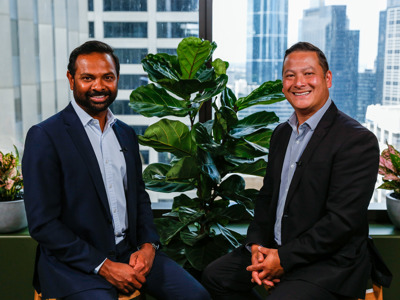By Paul Kearney, Founder and CEO of Kearney Group
At Kearney Group, we’ve long believed that good investment is responsible investment, and that great returns don’t have to come at the expense of our community or planet. So we teamed up with Zenith to create the ESG-centric Ethos Managed Portfolios, a suite of agile and actively-managed investments that won’t cost our collective future.
Goals for an ‘ESG-first’ portfolio offer
Our primary goal was to prove, unequivocally, that we could design a robust ‘ESG-first’ portfolio offering that could go toe-to-toe with other funds. That is, we wanted to create a portfolio that was a high-performer because of its do-gooder-ness, not in spite of it.
So, when we set to the work of planning for the Ethos suite, we had a range of criteria and goals in mind.
Demand at least some level of ESG integration
First off, to be considered, we wanted all fund managers to be applying at least some level of ESG integration.
Prioritise ‘shining examples’
From our shortlist of managers, we looked to partner with the ‘shining examples’ - those who were actively pursuing ESG, and were systematic in their portfolio design, screening and reporting processes. We chose to prioritise these fund managers wherever possible.
Advance both breadth and depth of ESG integration over time
As part of our own commitment to transparency and supporting a growing ESG market, we set about designing our own Classification Model with associated scoring system to reflect our desire to advance both the breadth and depth of ESG integration across the Ethos suite.
For our Classification Model, we first mapped together the RIAA’s Responsible Investment Spectrum and Zenith’s evolving Responsible Investment Framework (which spoke to one another quite nicely). Then, we built out our own scoring system that allows us to rank and identify areas in which we can:
- increase the number of Ethos funds that are invested under a responsible investment regime (quantity / breadth of ESG integration); and
- progressively take up increasingly regenerative (not just sustainable) forms of investing (quality / depth of ESG integration). For example, where two funds are considered otherwise equal, we would select the fund with the most aggressive ESG profile.
Further, to support our Classification Model, we’ve also developed our ‘Ethos Ethos’ - an ESG manifesto of sorts. This document outlines our guiding principles and a laundry list of the things we are seeking to include and seeking to avoid in our portfolios. We’ll be actively pursuing these ambitions over the coming months and years, working to ever-improve our RI capability and offer to clients.
Build on a foundation of best practice
At Kearney Group, we’ve got a 20 year track record of successful portfolio construction and management. So naturally, in addition to our ESG goals, we required a robust underlying portfolio assembly process; one that would take into account market trends and outlook, our broader investment philosophy, healthy diversification and risk management principles, and a range of ongoing checks and balances.
Working with Zenith
We’re pleased to say that the Zenith team, in particular David Wright, has been forthcoming, adaptable and open to our unique needs and perspectives.
Zenith’s RI Framework is clear, and their reporting is thorough and easy to access.
At each turn, we’ve been met with willingness to consider our ‘on the ground’ experience with clients and what we know are high expectations of an industry that’s on the move but still in its infancy.
Whilst we and our clients are pleased with what’s been achieved with the Ethos suite so far, admittedly, there is still much to do.
The challenge ahead
Of course, the main challenge we face is the considerable work that lays before all of us now - the funds management industry, the advice profession and the public at large - to transform our noble aspirations into action and infrastructure.
For ratings agencies like Zenith, this work includes the important task of assessing funds, and progressively re-rating them as new players emerge and old ones adapt (or die). Moreover, we believe Zenith et al can also play a crucial role as advocates for transparency, and by demanding the high-quality data and reporting we desperately need to transform the ESG sector.
While investment manager practices are maturing, no longer can ratings agencies and financial advisers afford to take ESG claims at face value. We are powerful stakeholders and the work is ours to be discerning and to delve deeply into the underlying policies and commitments made by funds (including demanding of them, full disclosures of portfolio holdings, at least in line with our OECD peers).
As advisers, understanding the ESG market and considering these factors as part of our investment recommendations is, quite simply, our job. If ESG has direct financial relevance, can be predictive of risk and reveals true long-term value, then failing to provide ESG analysis on investments is failing our moral obligation to our clients and our community.
Lastly, as citizens and likely investors in our own right, we should seize the opportunity to progress this conversation, to demand more and to affect change by voting with our feet and our dollars.
In short, there is much to do, and some urgency, if we are to meet the public’s demand, our moral obligation to our community and if we are to remain relevant, today into the future.




